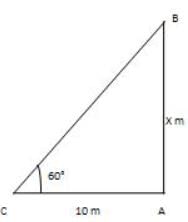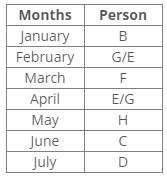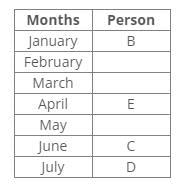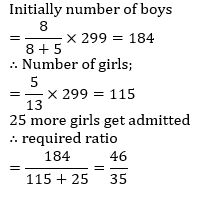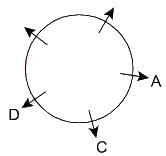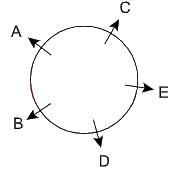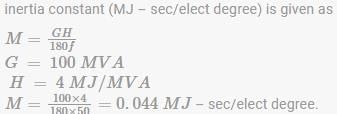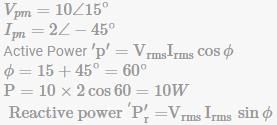MPPGCL JE Electrical Mock Test - 3 - Electrical Engineering (EE) MCQ
30 Questions MCQ Test - MPPGCL JE Electrical Mock Test - 3
The shadow of a building is 10 m long when the point of rise of the sun is 60°. Discover the building's stature.
When did Motilal Nehru draft a Constitution for India?
Into how many constituencies is the country divided for Lok Sabha elections?
Which of the following is not the limitation of the globe
The HCF of two numbers is 15 and their LCM is 300. If one of the number is 60, the other is :
Seven persons B, C, D, E, F, G and H are born on seven different months of a year starting from January, but not necessarily in the same order. Who was born in July?
Statement I: C was born just before D. Only two persons are born after H. Three persons are born between H and B. F was born two months after B.
Statement II: E was born in April. D was born after C. Two persons are born between E and B. B was not born in July. C was born one of the months after May.
The average monthly salary of the workers in a workshop is Rs. 8,500. If the average monthly salary of 7 technicians is Rs. 10,000 and the average monthly salary of the rest is Rs. 7,800, then the total number of workers in the workshop is
In a school having roll strength 299, the ratio of boys and girls is 8 : 5. If 25 more girls get admitted into the school, the ratio of boys and girls becomes
'Dogs' is related to 'Bark' in the same way as 'Goats' is related to:
In a school 30% of the students play football and 50% of students play cricket. If 40% of the students play neither football nor cricket, what percentage of total students play both the games?
Directions: Each of the following consists of a question and two statements numbered I and II given below it. You have to decide whether the data provided in the statements are sufficient to answer the question.
A, B, C, D and E are sitting around a circle and facing away from the centre. Who sits second to the right of B?
Statement I: A sits to the immediate left of C. D sits second to the right of A.
Statement II: D sits immediately between E and B. B sits to the immediate left of A.
A 100 MVA, 50 Hz generator feeding power through a double circuit transmission line with initial rotor angle 60°. A 3 phase fault occurs at middle point of one of the lines. the internal voltage of the generator is 1.5 pu and equivalent transfer admittance during fault is 0.5 pu and the infinite bus voltage is 1.1 pu. The generator has an inertia constant of 4 MJ/MVA and it was delivering 1 pu power prior of the fault. The inertia constant in (MJ – sec/elect degree) is –
In a P-N junction diode, the ratio of donor concentration (ND. to acceptor concentration (NA. is 0.25, then the ratio of width on p-side to width on n-side of the diode is
In diode clipping circuit shown, which among the following conditions are correct?

A charge of 4.8×103 C passes through a solution of copper sulphate. The number of C++ ions liberated from the electrolyte is
The magnitude and direction of the current in the circuit shown will be
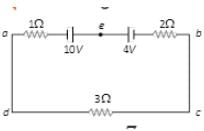
The positive sequence reactance will be equal to negative sequence reactance in case of-
Two D.C. Machine 500 KW each are tested by Hopkinson test. The power input would be of the order of-
Which of the following is the protective device against lightning overvoltages ?
The voltage phaser of a circuit is 10∠15°V and the current phasor is 2∠−45° A. The active and reactive powers in the circuit are
Four 100 W bulbs are connected in parallel across 200V supply line. If one bulb gets fused____
The elements which are not capable of delivering energy by its own are known as _____
A network has 4 nodes and 3 independent loops. What is the number of branches in the network?
According to Faraday's law of electromagnetic induction an emf is induced in a conductor whenever it_____.
The load factor for domestic loads may be taken as _____
A device having characteristics very close to that of an ideal voltage source is____.
For 11KV transmission line the inductance per km will be about-
The earthing electrodes should be placed within what distance in metres from the building whose installation system is being earthed.


